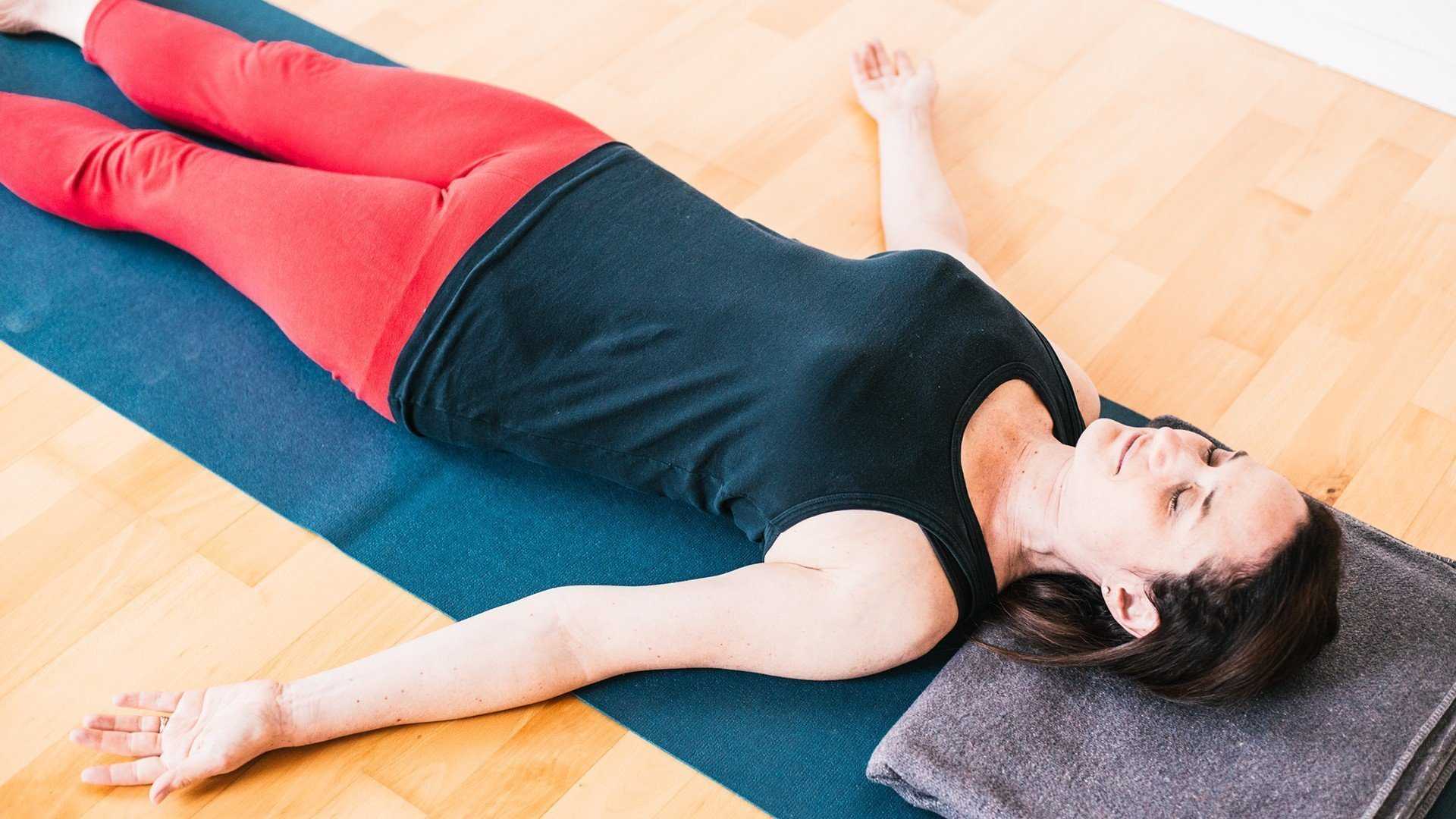BY: TRISHA CURLING
Savasana…easy right? “The best pose” people often say with a little humor. After all, we’re just lying on our backs, right? As usual with any asana (pose) there is much more going on than meets the eye.
Savasana is often found at the end of a class and serves as a time of rest and/or closure for the practice completed. This does not mean, however, that we don’t see it during our yoga practice or as a stand-alone. There are also a few variations of the pose to maximize the benefits for our individual needs.
What are the Benefits?
Savasana has the ability to provide a decrease in stress. It provides the body an opportunity to rest. This rest offers the necessary balance within the nervous system (between the sympathetic and parasympathetic systems). When we give ourselves time to do this, we teach our bodies to respond with a new pattern to stress and tension.
How do we tap into this?
I would usually say that the first thing to access or consider is our breath, but I might argue that finding a comfortable position first, will allow us to access the breath much better. If we are comfortable, we will more easily be able to focus on the quality of our breath. This is where the variations come in.
The “most common” as I mentioned is simply laying on our backs with arms and legs straight out (I usually encourage my students/clients to place arms out at roughly a 45 degree angle with palms facing up, to tap into the deeper pectoral muscles to contribute to a more optimal posture in all planes). This may be uncomfortable, however, for those that suffer from lower back pain. In this case, I would offer a couple of other variations.
One option is to place a bolster (a type of yoga pillow or cushion) under the knees for a little bit of elevation and lengthening of the sacrum.
Another option is bending the knees and placing the lower legs and feet up on a chair. This variation can provide even further relief for the lower back and abdomen (this option may not be available in a class setting depending on the type of class chosen).
After finding comfort, we can now tap into the breath and softening of the body. This can prove very difficult when our minds are sometimes racing. If it’s not possible to turn off our thoughts sometimes, that’s totally normal and letting it go will be more settling than trying to fight it. This is why Savasana may feel more difficult than other poses sometimes.
Savasana is an opportunity for stillness, silence, breath, calm, and possibly internalizing the sensations of the practice beforehand. A great way to deepen the pose is to imagine all parts of your body softening and/or settling towards the earth.
Allow your Savasana to provide all that it has to offer whether you practice yoga or not. Give it a try, lay on the floor or a yoga mat and take it all in.

